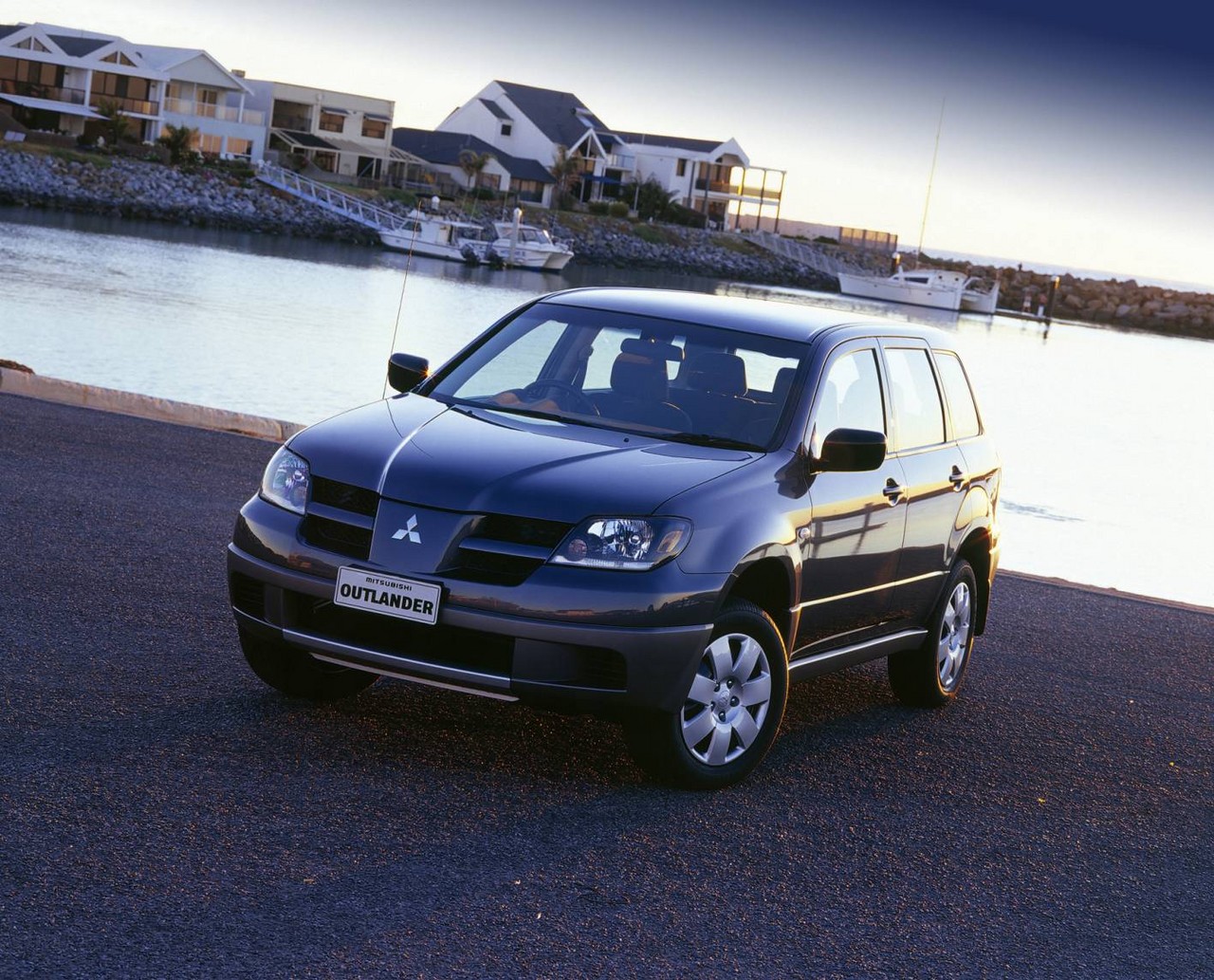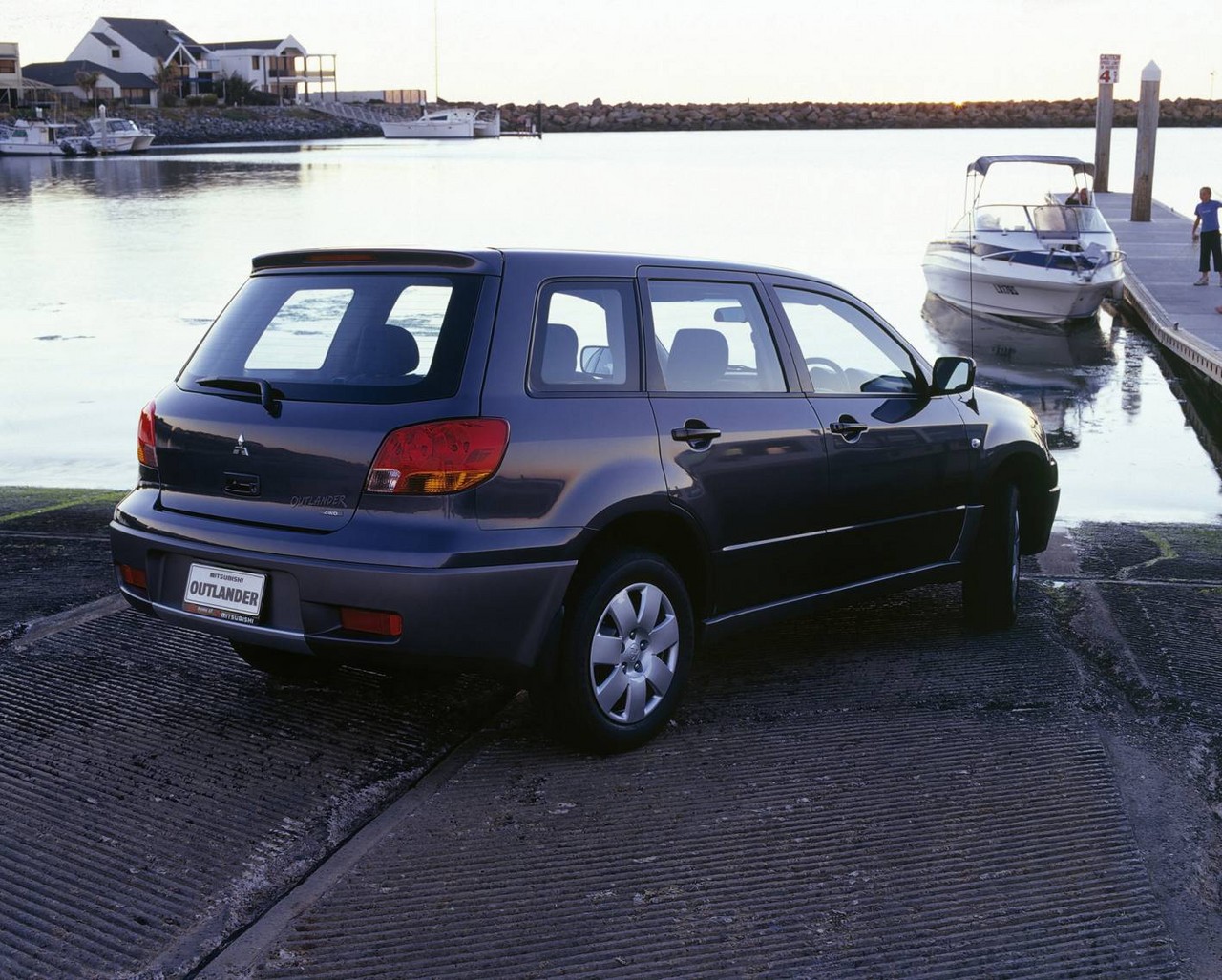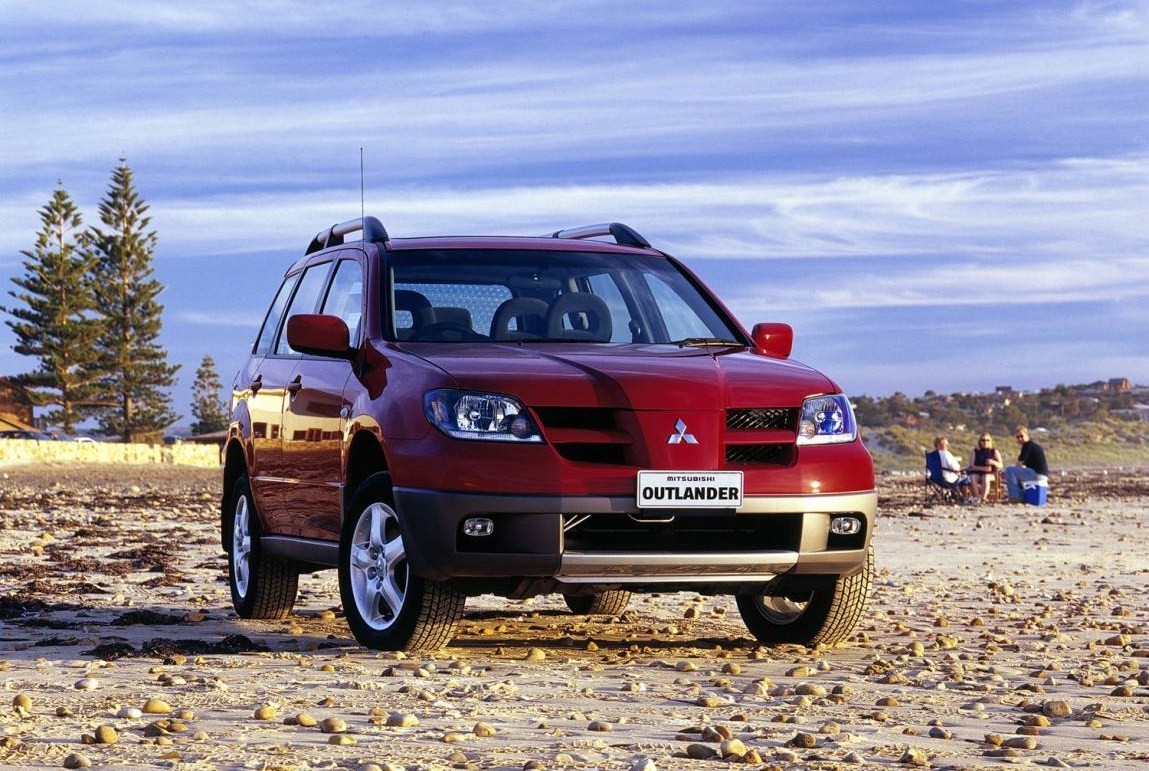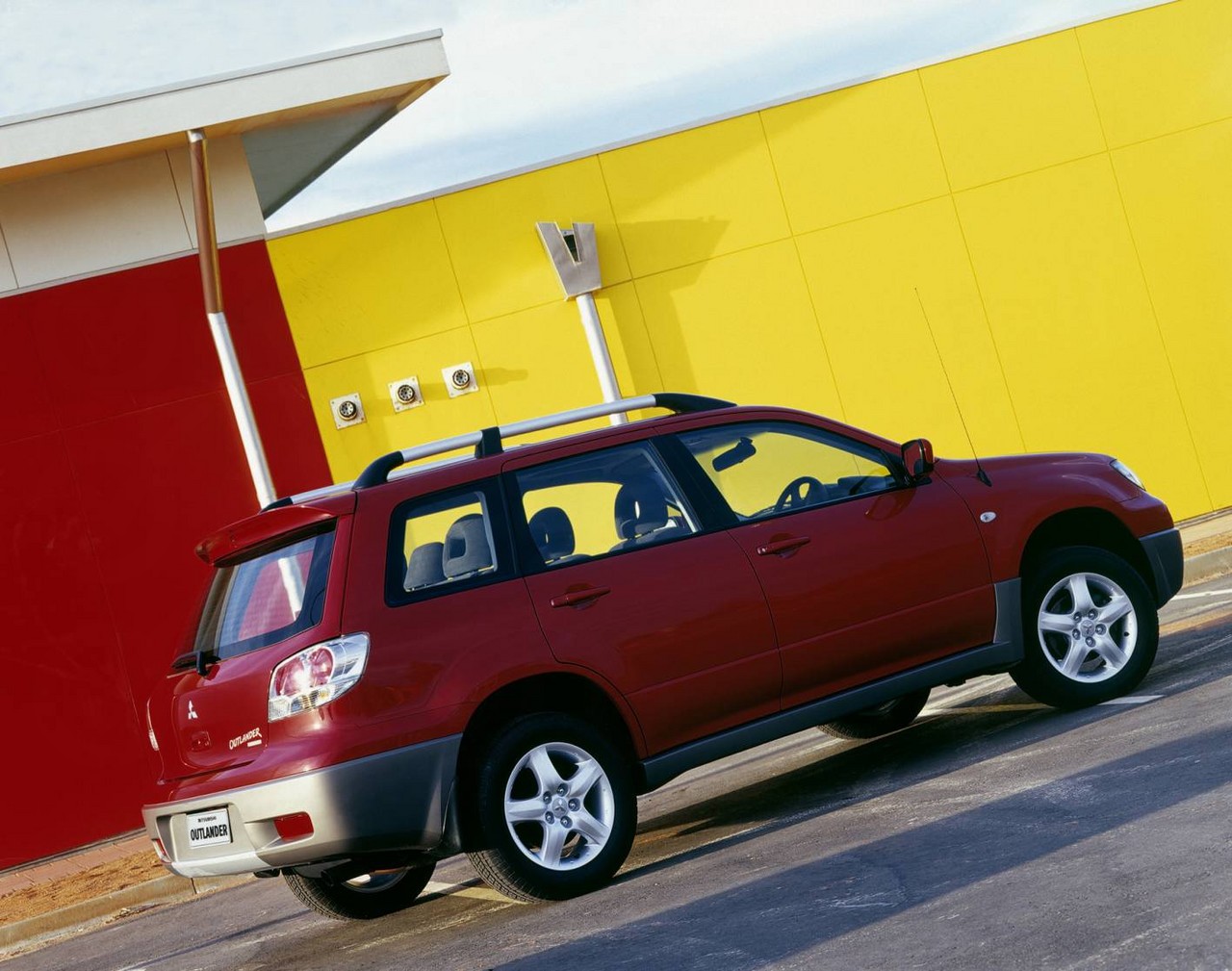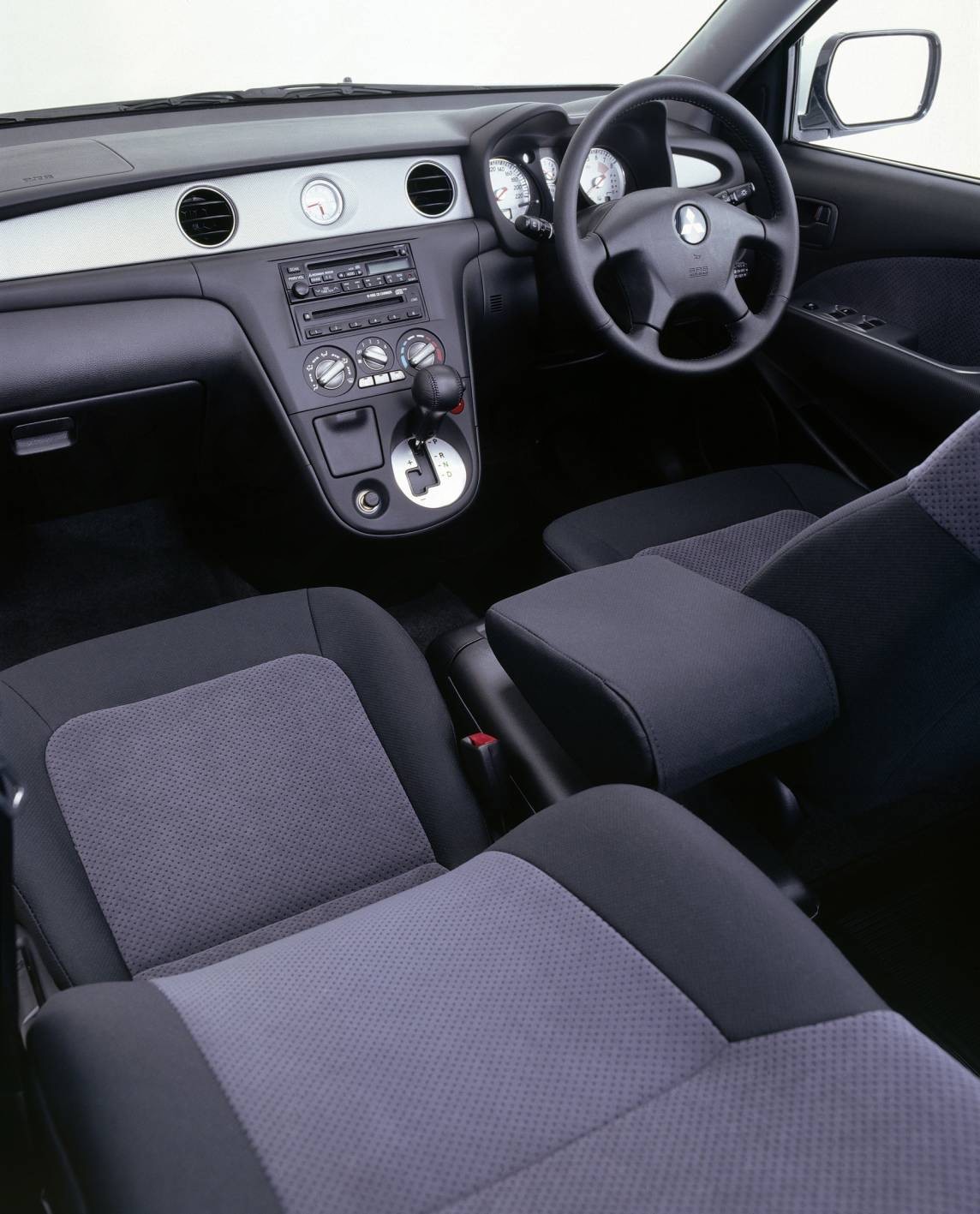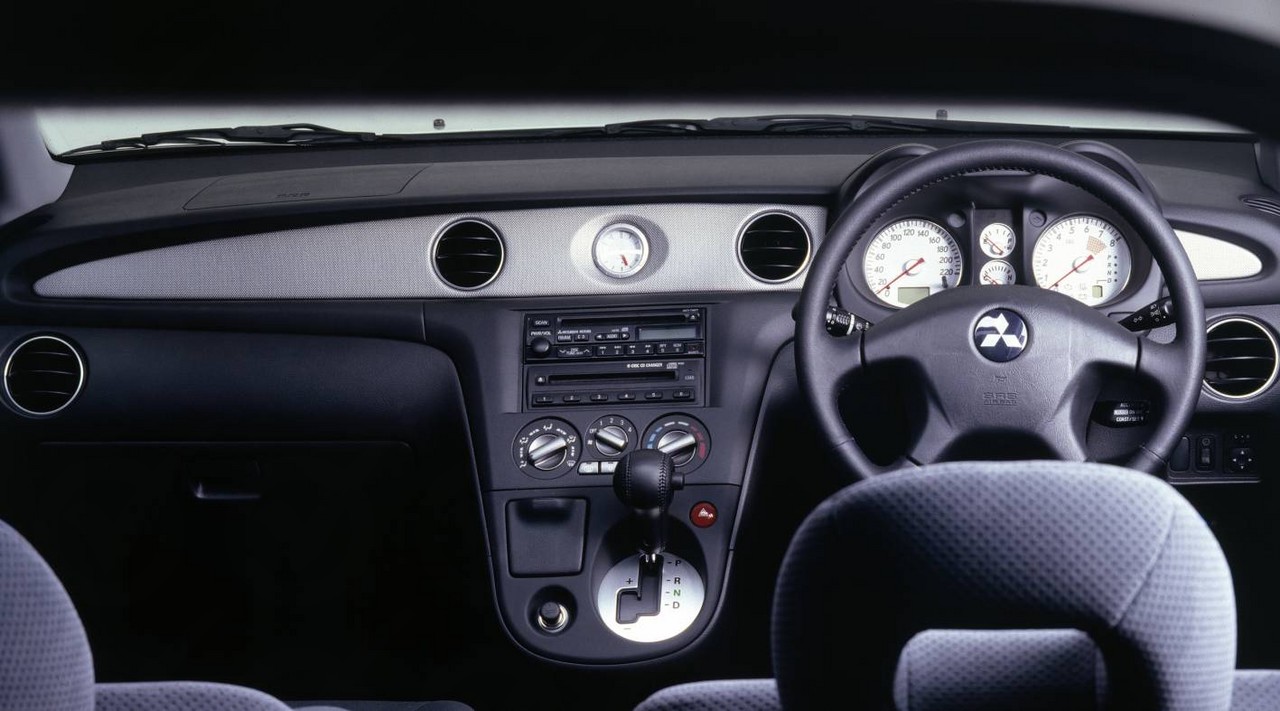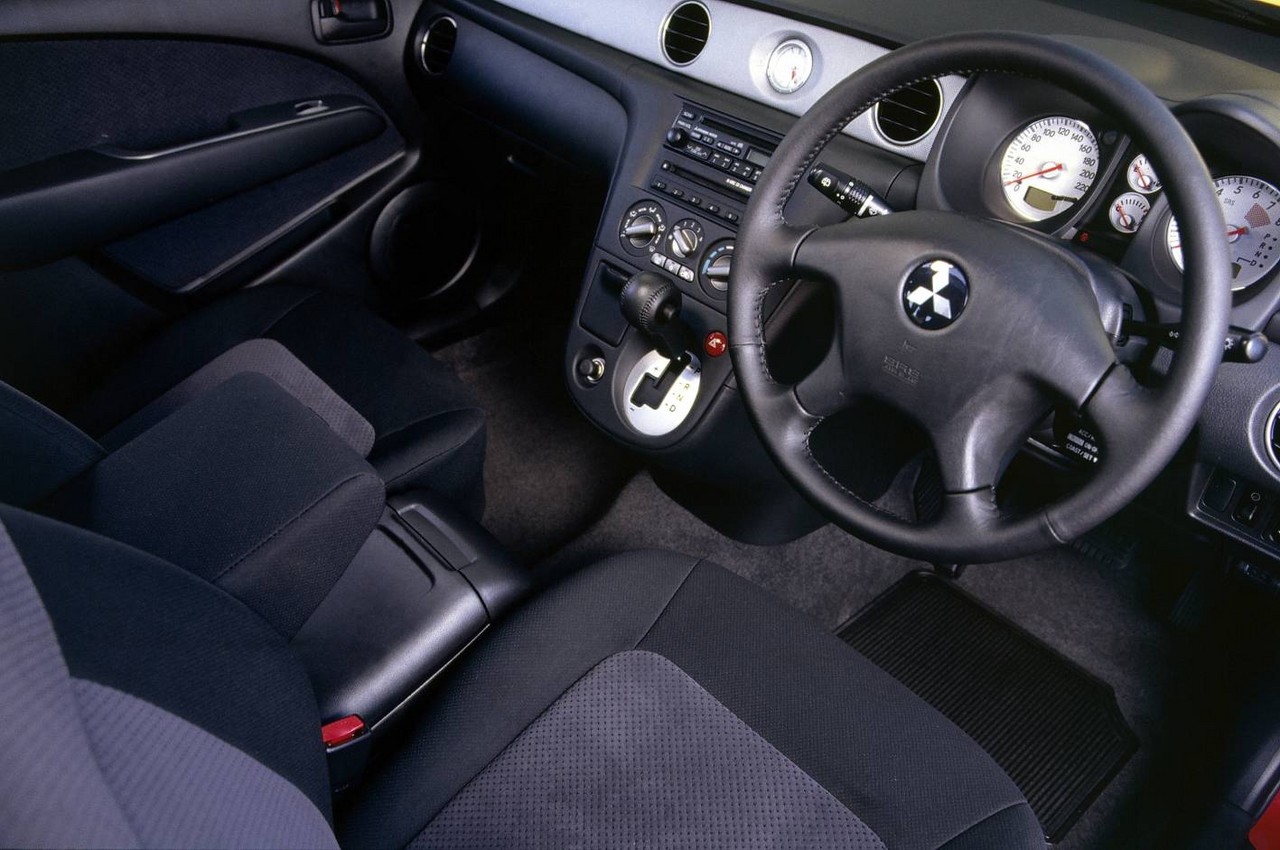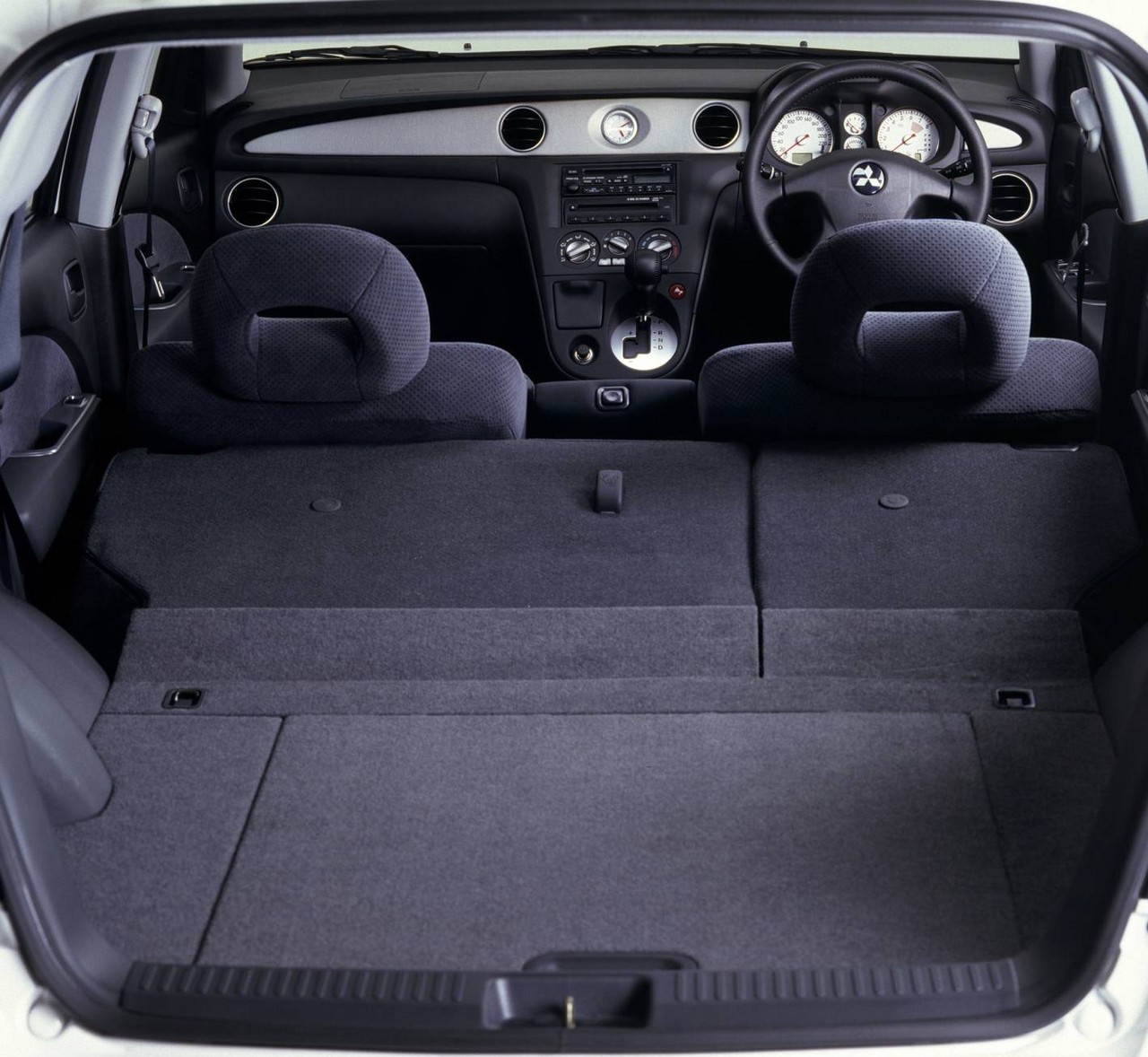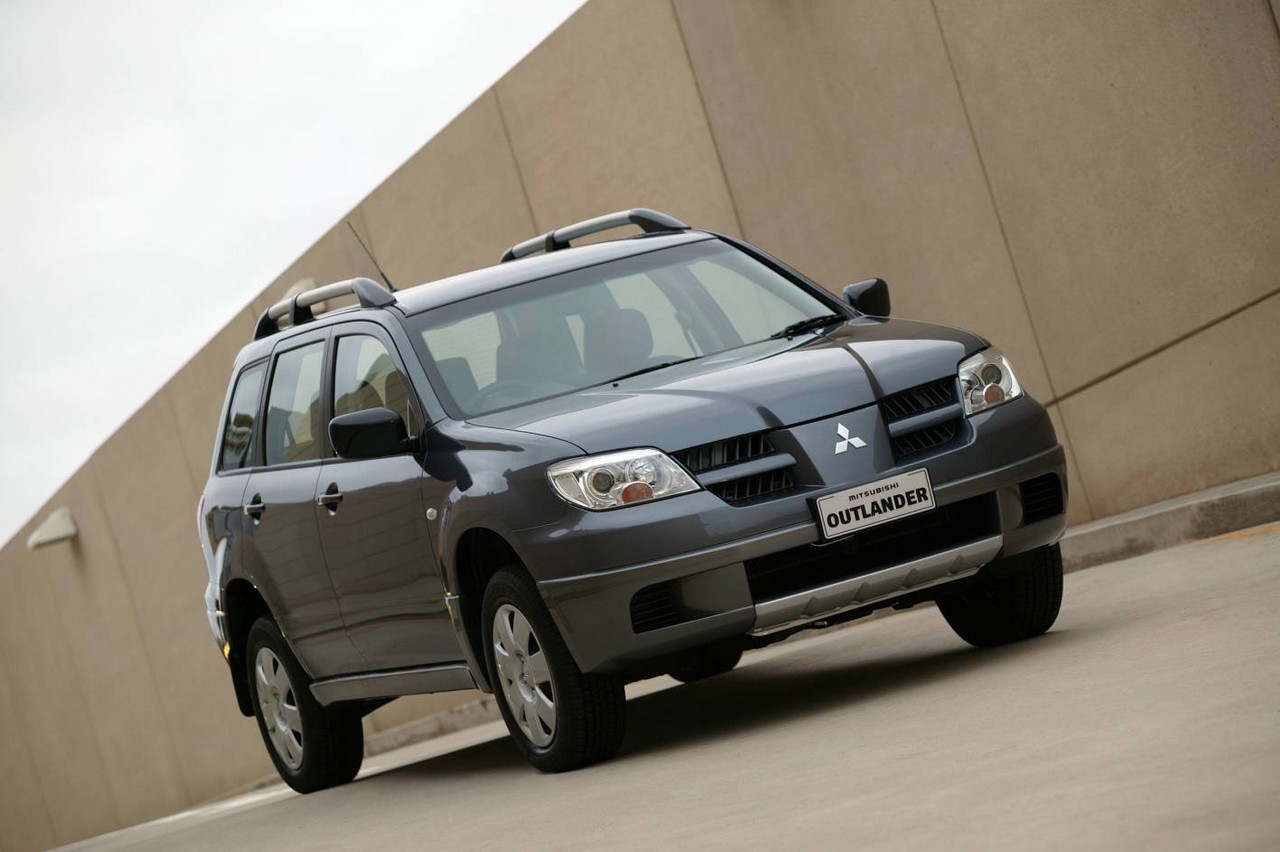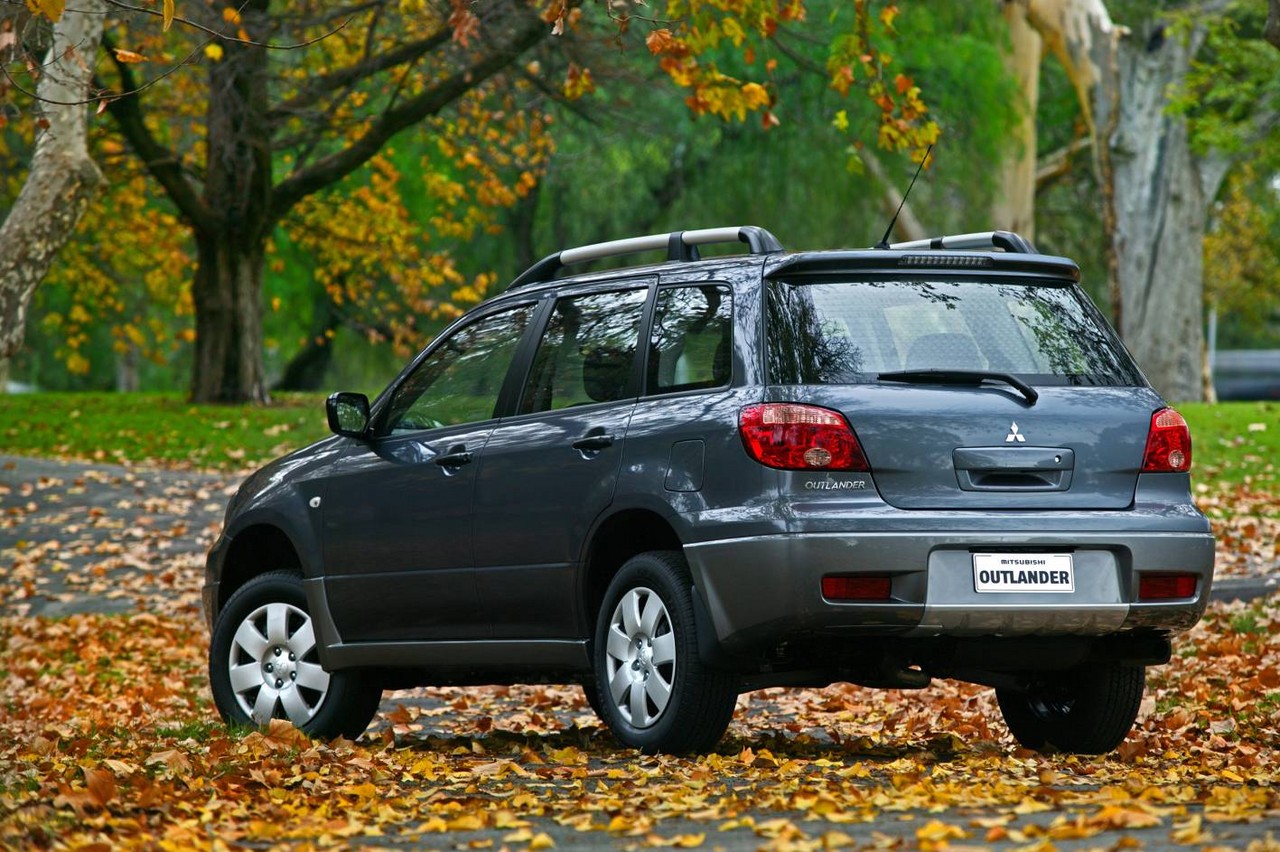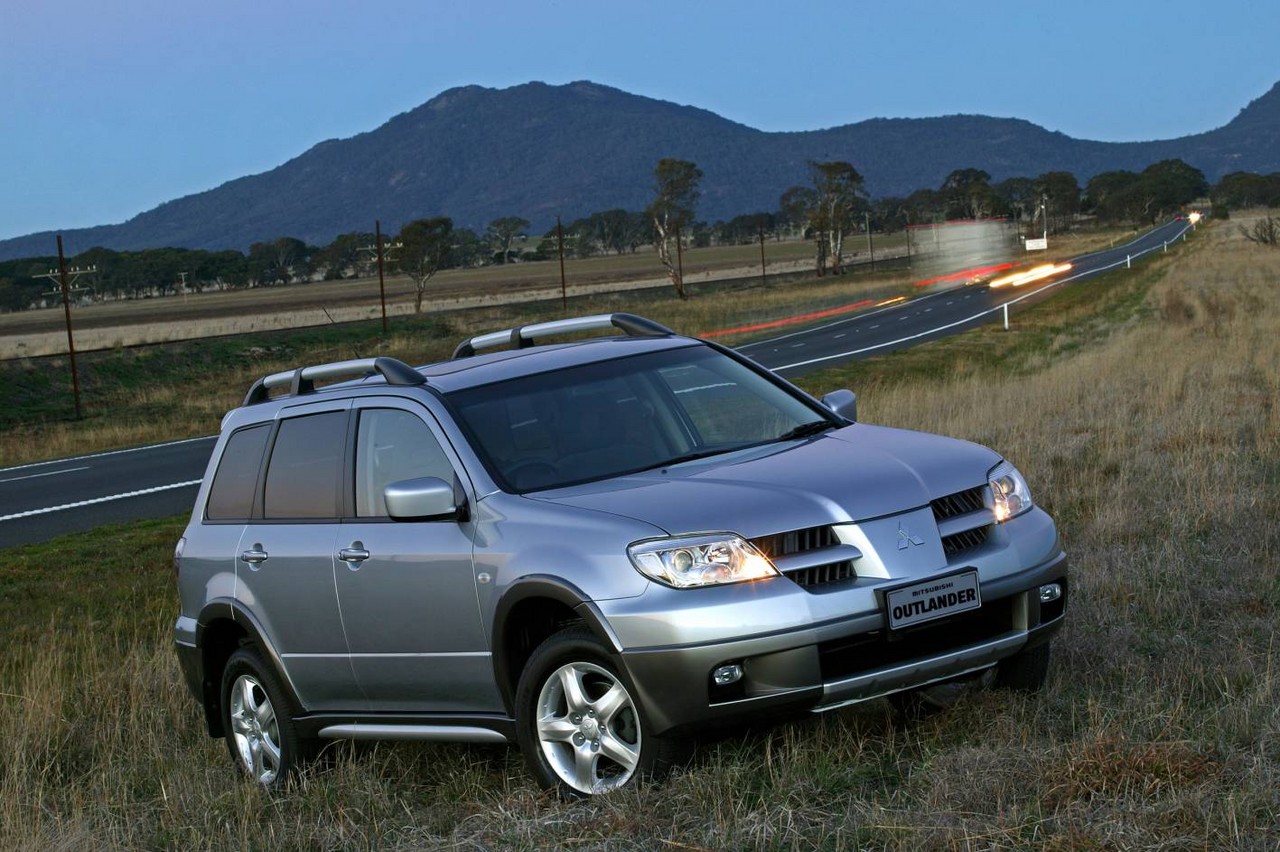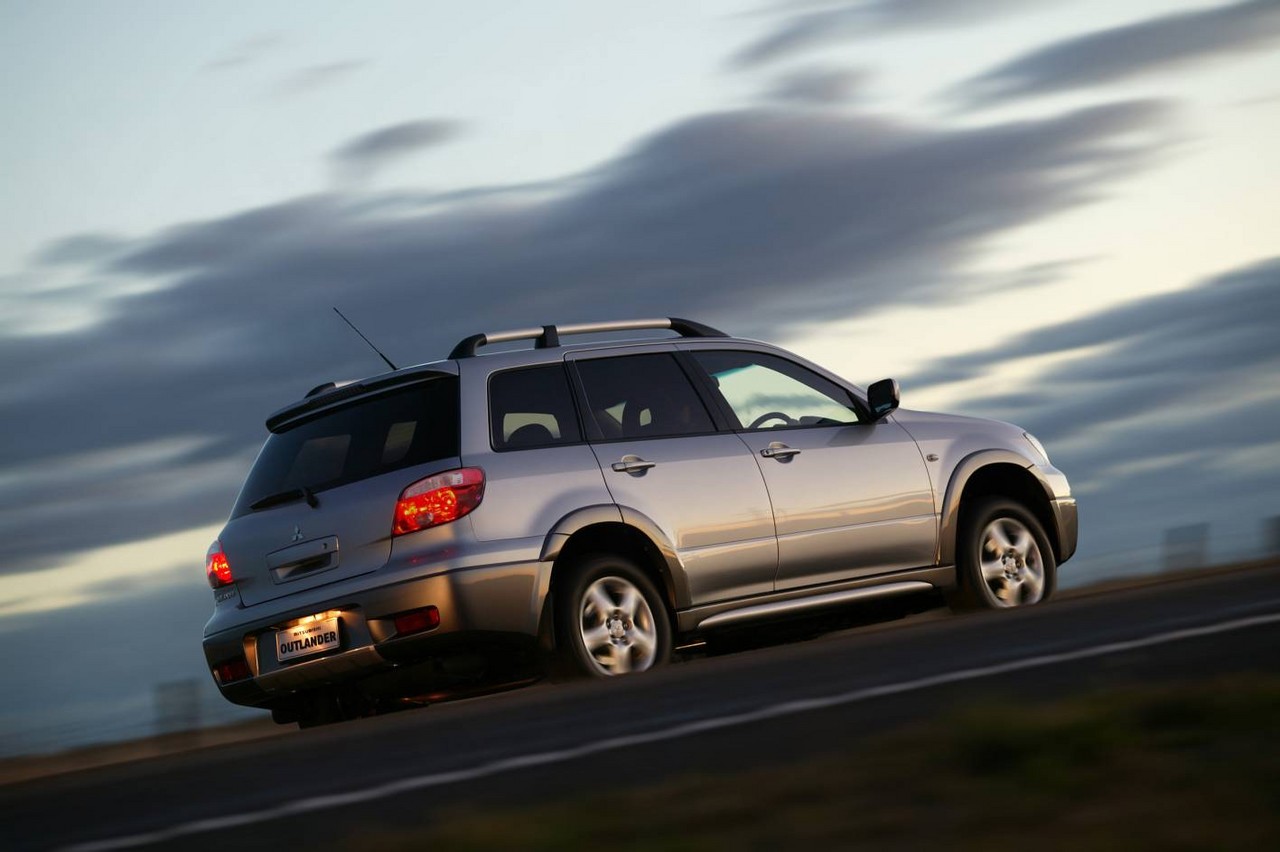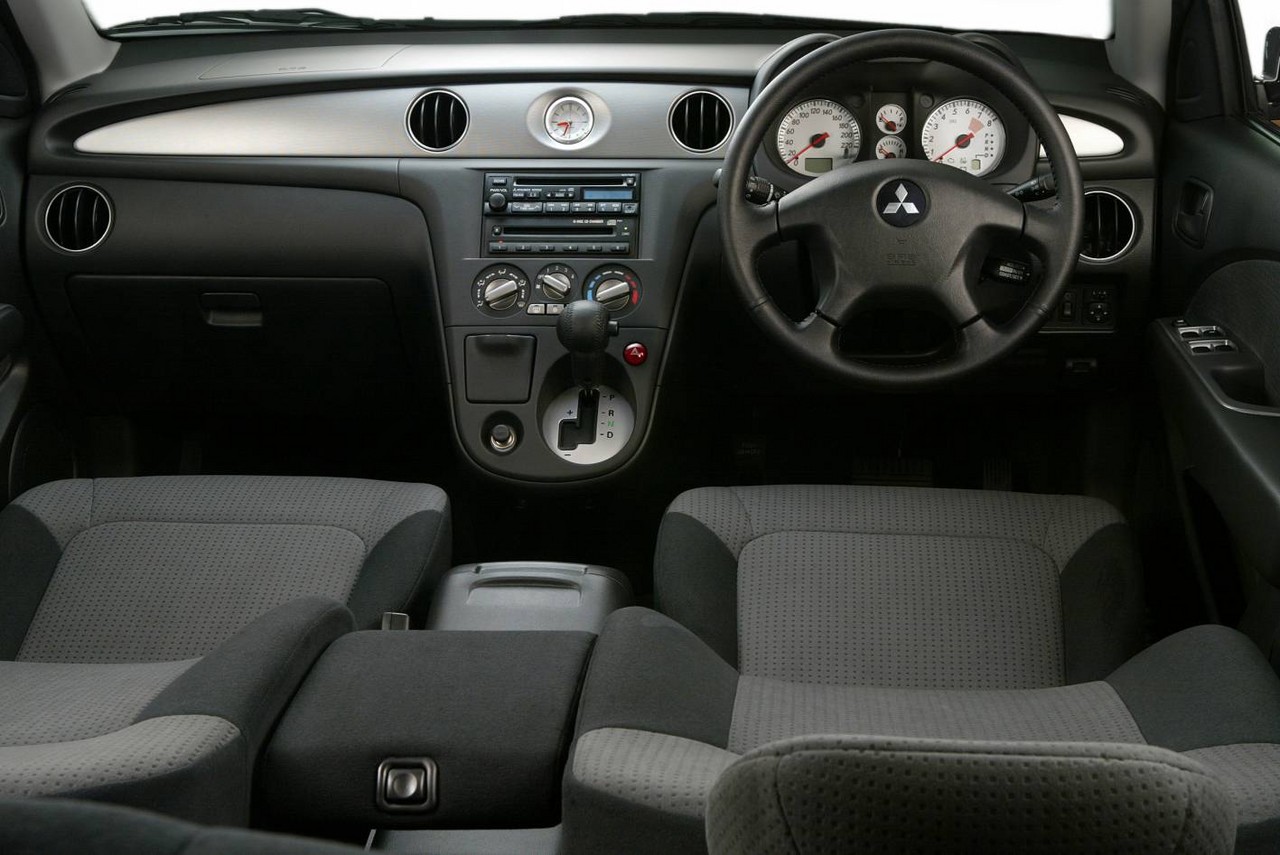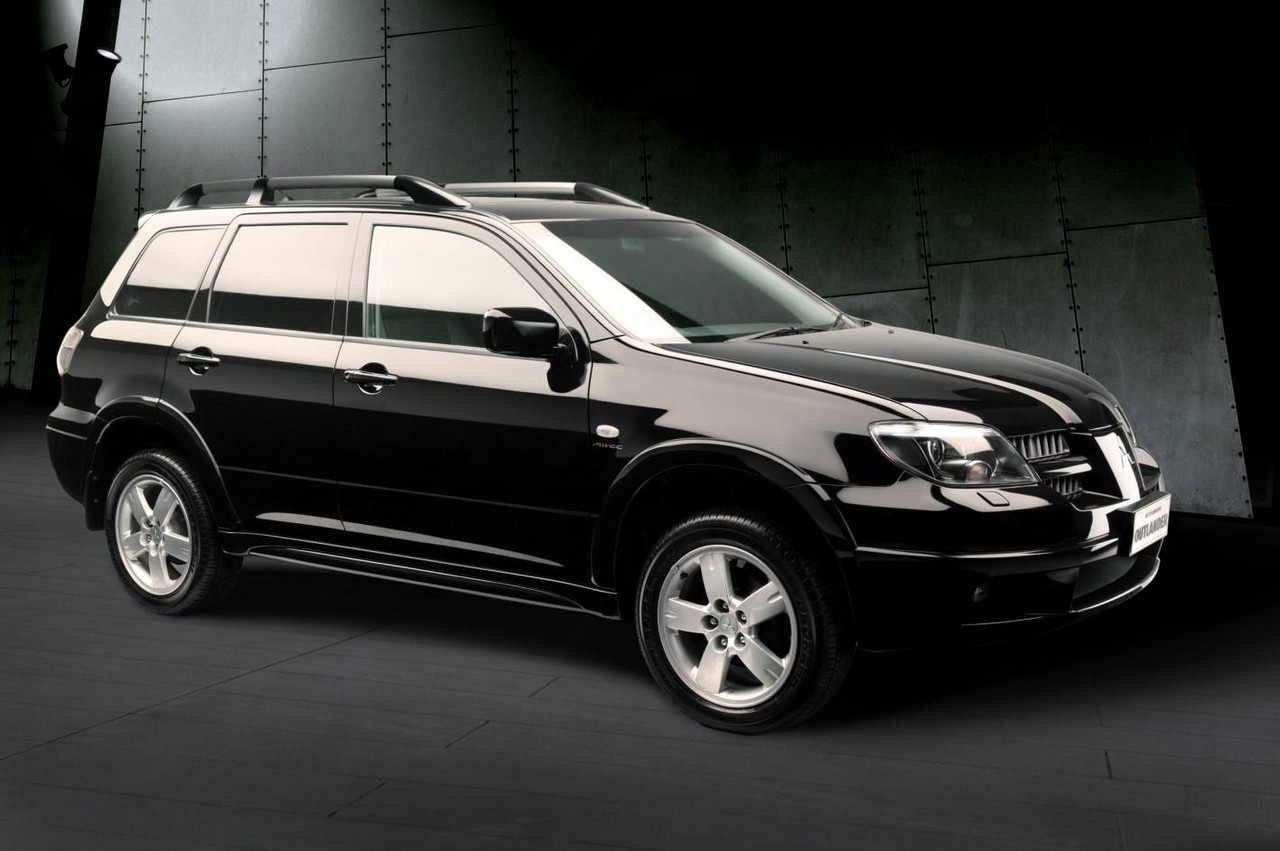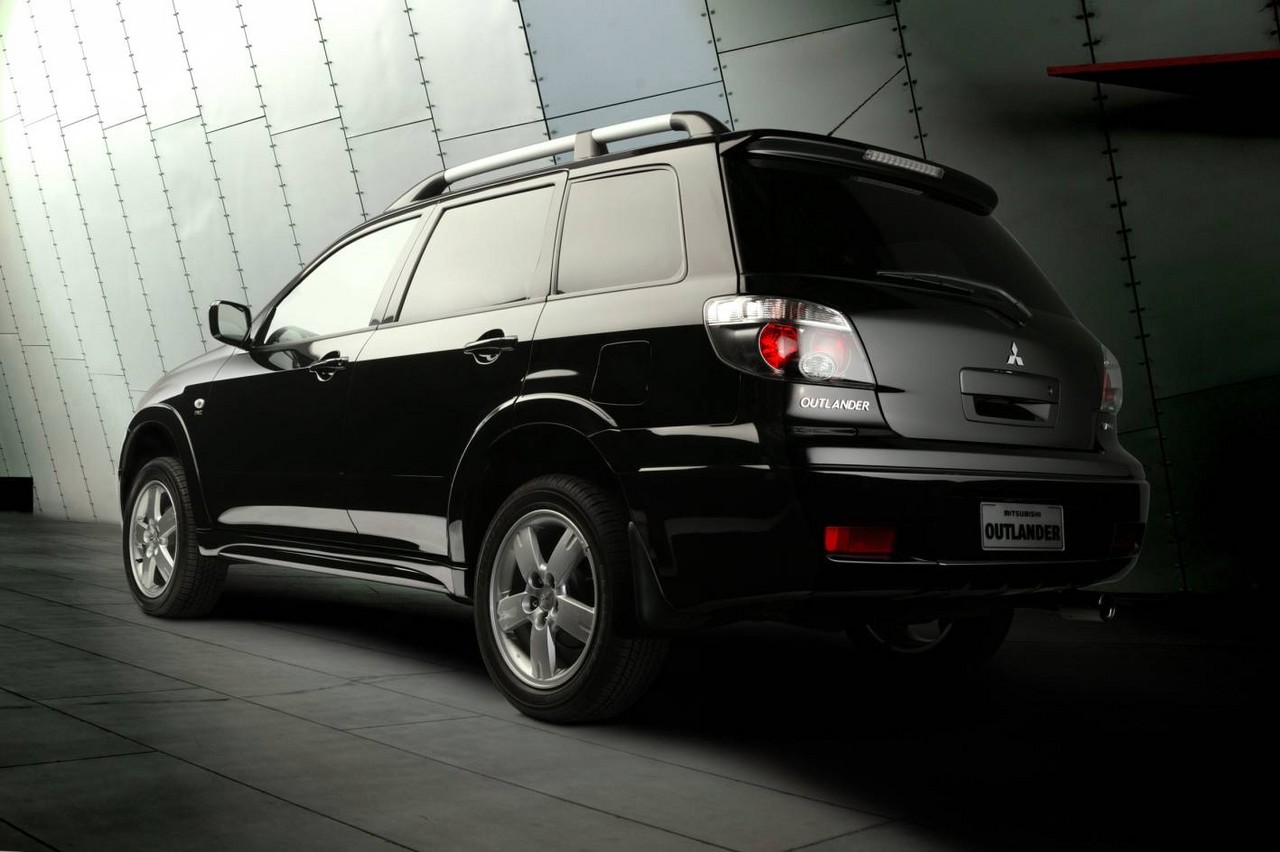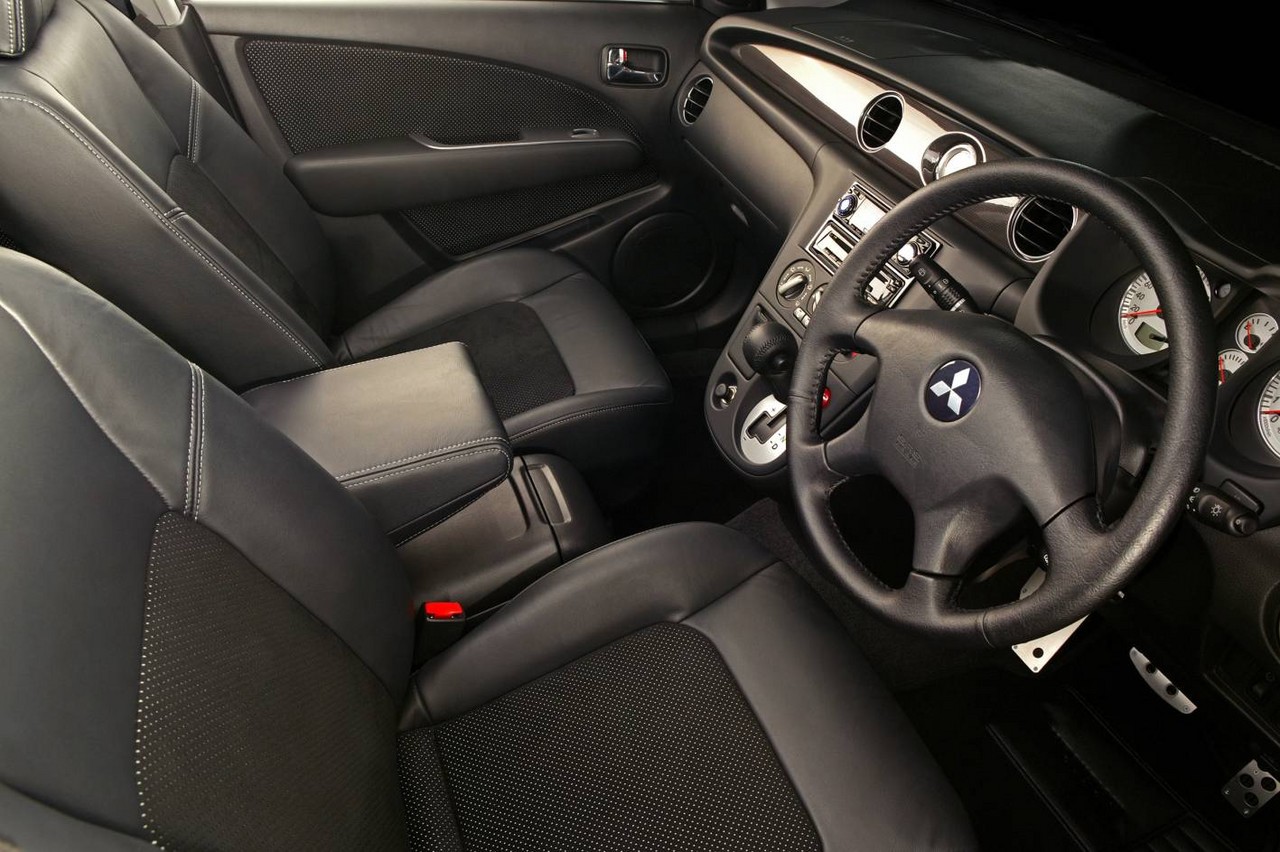
- Comfortable ride
- Supportive front seats
- Steering provides good feedback
- Spacious and versatile interior
- 2.4-litre engine lacks low-rev response
- Large turning circle
- For Outlander VR-X, tyre noise
- Steering wheel doesn’t adjust for reach
Review: Mitsubishi ZE Outlander (2003-04)
Overview
Released in February 2003, the Mitsubishi ZE Outlander was a compact, four-wheel drive SUV. Manufactured in Okazaki, Japan, the Outlander was powered by a 2.4-litre four-cylinder petrol engine with a single overhead camshaft and four valves per cylinder; a four-speed automatic transmission was fitted as standard. Furthermore, the ZE Outlander range consisted of entry-level LS and better-equipped XLS variants.
The Mk.1 Outlander had a monocoque chassis and was 4545 mm long, 1750 mm wide, 1600 mm tall and had a 2625 mm long wheelbase. The Outlander had MacPherson strut front suspension with an anti-sway bar and multi-link rear suspension with trailing arms and an anti-sway bar.
| Variants | Engine | Trans. | Peak power | Peak torque |
|---|---|---|---|---|
| LS, XLS |
2.4-litre petrol I4 | 4sp auto | 100 kW at 5000 rpm | 205 Nm at 2500 rpm |
4WD system
The Mk.1 Outlander had a full-time four-wheel drive system which utilised a viscous coupling that was integrated into the centre differential. In normal conditions, the system provided a 50:50 front/rear torque split. In the event that traction was lost, however, the viscous coupling would effectively lock the differential to transfer torque to the opposing axle (i.e. the wheels with grip). Furthermore, the front and rear differentials were both open.
Safety equipment
Standard safety equipment for the Outlander LS included dual front airbags and front seatbelts with pretensioners and load limiters. The Outlander XLS was further equipped with front side airbags, ABS and electronic brake force distribution.
ANCAP crash testing
In ANCAP crash testing , a 2003 Outlander – equipped with dual front airbags – received a four star adult occupant protection rating with a score of 27.99. In the offset crash test, protection from serious chest injury was marginal for the driver. In the side impact test, there was a slight risk of serious chest and abdomen injury for the driver.
Features: Outlander LS and XLS
Standard features for the Outlander LS included 16-inch steel wheels with 215/60 tyres, a four speaker sound system with CD player, air conditioning, cruise control, 60/40 split and folding rear seats, remote central locking, power mirrors and windows, a tilt adjustable steering wheel, rear tailgate lock and an immobiliser. The Outlander was also fitted with an integrated rear roof spoiler which included a high-mounted stop lamp.
The Outlander XLS added 16-inch five-spoke alloy wheels, a six speaker sound system with six-stack CD player, front fog lamps, a power tilt/slide sunroof, rear cargo blind, roof rails and leather-wrapped steering wheel and gearshift. Visually, the XLS could be identified by its white-faced gauges, clear lens tail-lights, larger rear spoiler and body-coloured door mirrors and door handles.
Review: Mitsubishi ZF Outlander (2004-06)
Overview
Released in July 2004, the ZF Outlander introduced a more powerful 2.4-litre four-cylinder MIVEC (‘Mitsubishi Innovative Valve Lift and Timing Electronic Control’) engine and an adaptive (INVECS II) four-speed automatic transmission with ‘Sports Mode’ sequential shifting. Compared to its ZE predecessor, the range was initially the same but was expanded in September 2004 with the introduction of the VRX variant; in 2006, a VR variant was released.
The ZF Outlander introduced a higher capacity alternator (from 90A to 110A), larger capacity radiator and an improved fan motor (from 80W to 120W). Visually, the ZF Outlander could be identified by its diagonal front grille bars, projector style headlights, front and rear bumper garnishes, ‘bee-sting’ radio antenna and rear spoiler with a clear lens high-mounted stop lamp. The rear tailgate also featured a larger rear window and tailgate handle.
| Variants | Engine | Trans. | Peak power | Peak torque |
|---|---|---|---|---|
| LS, Activ, VR, XLS, VRX |
2.4-litre petrol I4 | 4sp auto | 120 kW at 5750 rpm | 220 Nm at 4000 rpm |
Safety equipment
Compared to its ZE predecessor, safety equipment for the ZF Outlander was improved with ABS and electronic brake force distribution fitted as standard across the range. Braking performance also improved with all models fitted with four wheel disc brakes (previously rear drum brakes).
Features
Standard features for the Outlander LS remained substantially the same, while the XLS featured new seat fabrics, rear privacy glass and chrome scuff plates.
Compared to the LS, the Outlander VR added 17-inch alloy wheels (with sports suspension), front fog lights, sports profile bucket seats, and rear privacy glass, a leather-wrapped steering wheel and gearshift. The Outlander VRX was further equipped with a Fujitsu 10 Eclipse premium audio system, leather and suede seat trim. Visually, the VR and VRX could be identified by their darkened headlamp surrounds, clear lens tail lamps, monotone exterior paint finish and chrome exhaust tip. Inside, there were ‘carbon fibre-look’ garnishes and chrome interior door handles.
From July 2005, the Outlander VRX was also fitted with an in-dash multimedia system which featured a 6.5-inch colour screen with satellite navigation, CD/DVD/VCD/MPEG player and trip computer; these models also received bumper and side skirt silver highlights.
June 2006: Outlander update
In June 2006, the ZF Outlander range underwent a minor update: the VR was fitted with a six speaker sound system and the multimedia system in the VRX incorporated a reversing camera.
2006 Outlander Activ
In January 2006, a limited-run Activ variant was released. Based on the LS, the Activ was further equipped with a six-stack CD player, roof rack with cross bars, an alloy ‘nudge’ bar and ‘Activ’ badges.
Related links
